Impact of Pallet Wrappers in Modern Logistics
Date Posted:21 August 2024
The pallet wrapper has become an indispensable tool in modern logistics, offering numerous benefits that enhance efficiency, safety, and cost-effectiveness. From manual wrappers to fully automated systems.. The pallet wrapper has become an indispensable tool in modern logistics, offering numerous benefits that enhance efficiency, safety, and cost-effectiveness. From manual wrappers to fully automated systems..
In the ever-evolving world of logistics and supply chain management, the pallet wrapper has emerged as a crucial tool that enhances efficiency, ensures safety, and optimizes costs. As businesses strive to meet the demands of a globalized market, the role of pallet wrapping technology becomes increasingly significant. This article delves into the evolution, types, benefits, and future prospects of pallet wrappers, highlighting their indispensable role in modern logistics.
The Evolution of Pallet Wrappers
The concept of pallet wrapping dates back to the mid-20th century when the need for securing goods during transportation became apparent. Initially, manual methods involving ropes and nets were used, but these were time-consuming and offered limited protection. The invention of stretch film in the 1970s marked a turning point. This versatile material provided better load stability and protection, laying the groundwork for the development of automated wrapping machines.
The first automated pallet wrappers were relatively simple, relying on basic mechanical systems. Over the years, advancements in technology have led to the creation of sophisticated machines equipped with programmable logic controllers (PLCs), sensors, and advanced wrapping techniques. Today's pallet wrappers are designed to handle various load sizes and shapes, ensuring optimal wrapping with minimal human intervention.
Types of Pallet Wrappers
Pallet wrappers can be broadly classified into three categories: manual, semi-automatic, and fully automatic.
- Manual Pallet Wrappers: These are the most basic type, requiring an operator to manually apply the stretch film around the pallet. They are suitable for small-scale operations where the volume of palletized goods is relatively low.
- Semi-Automatic Pallet Wrappers: These machines require some level of human intervention, typically to start the wrapping process and ensure the load is positioned correctly. They offer a good balance between cost and efficiency, making them ideal for medium-sized operations.
- Fully Automatic Pallet Wrappers: Designed for high-volume operations, these machines automate the entire wrapping process. They are equipped with advanced features such as load sensing, automatic film cutting and sealing, and programmable wrapping patterns. Fully automatic pallet wrappers significantly reduce labor costs and increase throughput.
Benefits of Using Pallet Wrappers
The adoption of pallet wrappers offers numerous benefits, making them a valuable investment for businesses involved in logistics and warehousing.
- Enhanced Load Stability: Pallet wrappers ensure that goods are securely bound to the pallet, reducing the risk of shifting or toppling during transportation. This stability is crucial for preventing damage to products and ensuring they reach their destination intact.
- Improved Efficiency: Automated and semi-automatic pallet wrappers streamline the wrapping process, allowing for faster preparation of pallets for shipping. This efficiency translates to quicker turnaround times and increased productivity in the warehouse.
- Cost Savings: While the initial investment in a pallet wrapper can be substantial, the long-term savings are significant. By optimizing the use of stretch film and reducing labor costs, businesses can achieve a favorable return on investment. Additionally, minimizing product damage during transit reduces the need for costly replacements or refunds.
- Enhanced Safety: Manual pallet wrapping can be physically demanding and pose ergonomic risks to workers. Automated pallet wrappers eliminate the need for repetitive manual labor, reducing the likelihood of workplace injuries and creating a safer working environment.
- Environmental Benefits: Modern pallet wrappers are designed to use stretch film efficiently, reducing waste and promoting sustainability. Some machines are also compatible with eco-friendly films, further minimizing the environmental impact.



























































































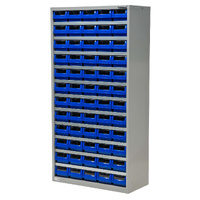

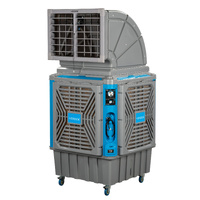


























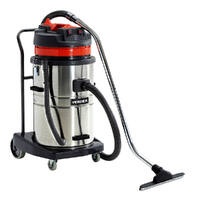







 Trolleys & Hand Trucks
Trolleys & Hand Trucks Cage Trolleys
Cage Trolleys Cleaning Carts & Trolleys
Cleaning Carts & Trolleys Construction Trolleys
Construction Trolleys Custom Trolleys
Custom Trolleys Hand Trucks & Dollies
Hand Trucks & Dollies Laundry/Linen Trolleys
Laundry/Linen Trolleys Lifting Trolleys
Lifting Trolleys Order Picking Trolleys
Order Picking Trolleys Panel Cart Trolleys
Panel Cart Trolleys Platform Trolleys
Platform Trolleys Powered Trolleys
Powered Trolleys Shelf & Tiered Trolleys
Shelf & Tiered Trolleys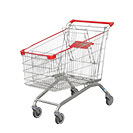 Shopping Trolleys
Shopping Trolleys Stainless Steel Trolleys
Stainless Steel Trolleys Tool Trolleys
Tool Trolleys Utility & Service Carts
Utility & Service Carts Lifting & Handling Equipment
Lifting & Handling Equipment Forklift Attachments
Forklift Attachments Jib Attachments
Jib Attachments Lifting Hoists & Pallet Hooks
Lifting Hoists & Pallet Hooks Load Skates & Tow Tugs
Load Skates & Tow Tugs Manual Stackers & Lifters
Manual Stackers & Lifters Pallet Jacks
Pallet Jacks Pallet Lifters
Pallet Lifters Pallet Rotators & Dispenser
Pallet Rotators & Dispenser Powered Pallet Trucks & Electric Lifters
Powered Pallet Trucks & Electric Lifters Scissor Lift Trolleys and Tables
Scissor Lift Trolleys and Tables Conveyor Equipment
Conveyor Equipment Conveyor Frames & Stands
Conveyor Frames & Stands Roller & Skate Conveyors
Roller & Skate Conveyors Ladders & Access Equipment
Ladders & Access Equipment Container & Yard Ramps
Container & Yard Ramps Ladders & Step Stools
Ladders & Step Stools Work Platforms & Crane Cages
Work Platforms & Crane Cages Drum Handling Equipment
Drum Handling Equipment Drum Storage & Bunding
Drum Storage & Bunding Drum Trolleys & Lifters
Drum Trolleys & Lifters Forklift Drum Handling
Forklift Drum Handling Waste Handling & Bins
Waste Handling & Bins Bin Lifters & Tippers
Bin Lifters & Tippers Plastic Waste & Wheelie Bins
Plastic Waste & Wheelie Bins Steel Waste & Tipping Bins
Steel Waste & Tipping Bins Waste Carts
Waste Carts Dangerous Goods Storage & Spillage
Dangerous Goods Storage & Spillage Aerosol Cans Storage Cages
Aerosol Cans Storage Cages Bunded Pallets & Storage
Bunded Pallets & Storage Corrosive Goods Storage Cabinets
Corrosive Goods Storage Cabinets DG Storage & Trolleys
DG Storage & Trolleys Flammable Liquid Cabinets
Flammable Liquid Cabinets Forklift Gas Storage Cages
Forklift Gas Storage Cages Site Storage
Site Storage Spill Kits
Spill Kits Shelving & Storage Equipment
Shelving & Storage Equipment Stillage & Transport Cages
Stillage & Transport Cages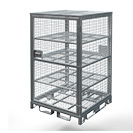 750 Series Cage Configurations
750 Series Cage Configurations Heavy Duty Cabinets
Heavy Duty Cabinets Heavy Duty Shelving
Heavy Duty Shelving Mega Bins & Pallets
Mega Bins & Pallets Packing & Workbenches
Packing & Workbenches Parts Trays & Stor-Pak Bins
Parts Trays & Stor-Pak Bins Pegboard & Louvre Panels
Pegboard & Louvre Panels Plastic Bins & Crates
Plastic Bins & Crates Plastic Handling Solutions Bins
Plastic Handling Solutions Bins Plastic Pallets
Plastic Pallets Stack & Nest Bins
Stack & Nest Bins Pallet Racking Accessories
Pallet Racking Accessories Workplace Equipment
Workplace Equipment Modular Workbenches
Modular Workbenches Electric Height-Adjustable Workbenches
Electric Height-Adjustable Workbenches Floor Matting
Floor Matting General Workplace Equipment
General Workplace Equipment Industrial Weighing Scales
Industrial Weighing Scales Packaging Machinery
Packaging Machinery Stationery Cupboards
Stationery Cupboards Storage and Stillage Cages
Storage and Stillage Cages Tool Trolleys
Tool Trolleys Tooling Cabinets
Tooling Cabinets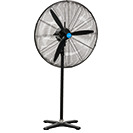 Workshop Fans and Coolers
Workshop Fans and Coolers Safety Barriers, PPE & Signage
Safety Barriers, PPE & Signage Barriers & Bollards
Barriers & Bollards First Aid Equipment
First Aid Equipment Gloves, Knives and PPE
Gloves, Knives and PPE Signage
Signage Cleaning & Site Supplies
Cleaning & Site Supplies Cleaning Equipment
Cleaning Equipment Cleaning Trolleys
Cleaning Trolleys Rubbish Bins
Rubbish Bins Signs & Traffic Supplies
Signs & Traffic Supplies Construction Equipment
Construction Equipment Construction Trolleys
Construction Trolleys Waste Handling
Waste Handling General Site Equipment
General Site Equipment Concrete Equipment
Concrete Equipment Site Storage
Site Storage Lifting Equipment
Lifting Equipment Verdex Specials
Verdex Specials










